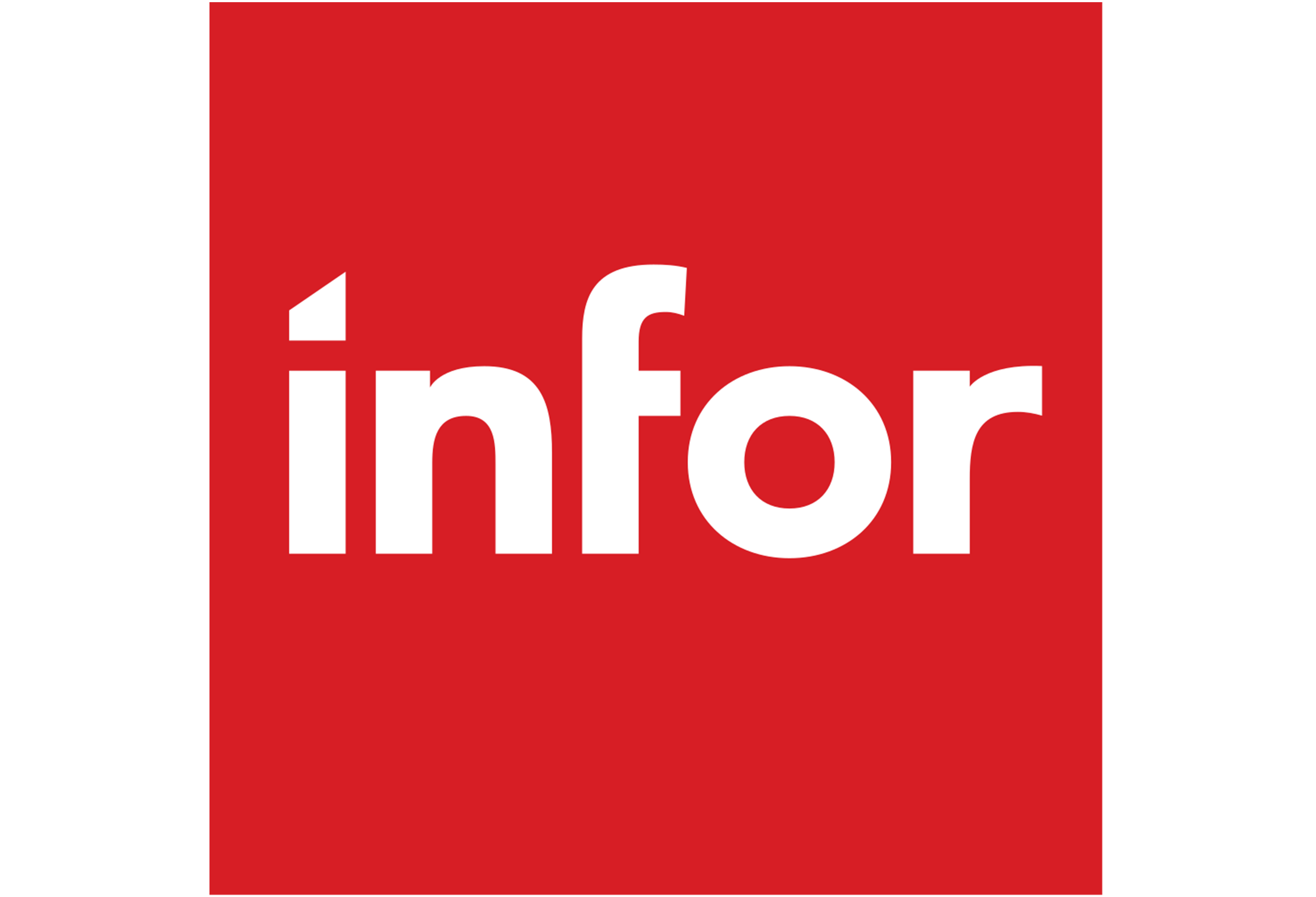
Article by Fabio Tiviti
Vice President ASEAN, Infor
We live in an era of disruption. Fuelled by pervasive digitalisation and hyper connectivity, rapid-fire changes are roiling entire industries, companies, and even countries. Business disruption has become the new normal, and it is arguably intensifying with the splintering of traditional business models on multiple fronts ranging from transportation and travel to office spaces.
This wave of change is also seeping into normally staid industries such as food production. To stay relevant, food producers must re-evaluate shifting market trends and leverage the power of technology and data to place themselves in an advantageous position for the journey ahead.
Finding patterns in data
Data often contain patterns that are not evident at first blush. We have learned to identify some of them in our lives: Skipping classes will probably result in difficulties with passing the exams; employees who meet the expectations of their bosses are more likely to get a hefty year-end bonus. The challenge for food producers lies with scouring their data to uncover hidden patterns that help them cut waste and increase their production rate.
To succeed with data, food producers must move beyond limited, causal factors, and look at larger data sets across multiple data points. For instance, what happens when the local temperature goes above 38 degrees Celsius and the humidity stays consistently above 95% for an entire week? Does quality suffer—likely—or does this result in delays within the supply chain that increase the risks of spoilage and loss of revenue?
Parse through enough data, and the correlation between production delays or quality issues with innocuous hiccups further up or down the supply chain become readily apparent. Unfortunately, the digital pipes to funnel data and the systems to manage and analyse data on-premises just does not exist in most organisations.
This means that any attempt to harness the full power of data cannot ignore the cloud and its ability to manipulate vast amounts of structured and unstructured data.
The agility of the cloud offers a seamless way to integrate with disparate data sources, while offering a common platform to share that wealth of information, ensuring that all stakeholders are kept informed to make data-driven decisions.
Going deeper with analytics
The “how” of digitalisation is crucial when it comes to pulling ahead of the competition and is a perennial problem that has contributed to the surging growth of the big data and analytics market that Frost & Sullivan predicts will reach US$40.6 billion by 2023. Should food producers turn to third-party data analytics and visualisation products to connect the dots using data?
Identifying the right solutions really boils down to where food producers are on the maturity curve. Many of the standalone tools are certainly capable enough to generate the requisite analytics or populate a corporate dashboard. Of course, figuring out advanced scenarios such as linking sales demand to production data will require more specialised tools.
Such insights can be gleaned from an industry-specific ERP system that is built on relevant domains of expertise and which has access to a centralised data repository. With the ability to dynamically access data sources across the entire supply chain made available with the power of networked analytics, stakeholders can quickly identify redundant processes or wasted efforts.
Finally, machine learning offers the ability to bring things to the next level. While seen as a fad by some, there are practical and highly valuable outcomes that can be gained from the right application of machine learning to improve planning efficiency or reduce waste.
More data using technology
Across the world, food producers are using technology to increase the data that they can leverage. For instance, at least one livestock producer has started putting activity trackers on cows in a bid to raise healthier cows. Elsewhere, farmers are using drones to perform detailed heat mapping of their fields to identify hot spots during the day—of relevance even with other types of crops due to health risks associated with certain food additives reaching very high temperatures.
Whether drones or internet of things (IoT) appliances, the rising affordability of technology means that they are being deployed more pervasively than ever. This consumerisation, in turn, is leading to broader deployments, culminating in a plethora of new opportunities and the ability to deliver highly personalised offerings.
Though the above might sound impressive, of even greater appeal would be use cases that are yet to be dreamt up. As new use cases are found, the ability to quickly adapt and implement them can offer savvy food producers a vital advantage to improve their supply chain, identify inefficiencies, and be a forerunner in harnessing new opportunities.

โดย นายฟาบิโอ ทิวิติ
รองประธาน และผู้นำประจำภูมิภาคอาเซียน อินฟอร์
เราอยู่ในช่วงเวลาของการเปลี่ยนแปลงอย่างสิ้นเชิง (disruption) การเปลี่ยนแปลงซึ่งขับเคลื่อนด้วยการนำเทคโนโลยีดิจิทัลที่มีอยู่อย่างแพร่หลายมาใช้ และการเชื่อมต่อถึงกันอย่างมากมายมหาศาลที่โหมมาอย่างรวดเร็วกำลังสร้างผลกระทบต่ออุตสาหกรรมและบริษัททุกประเภท และกระทบไปจนถึงระดับประเทศ การดิสรัปทางธุรกิจกลายเป็นความปกติวิถีใหม่ (new normal) ไปแล้ว และทวีความเข้มข้นขึ้นเมื่อรูปแบบการทำธุรกิจแบบเดิมไม่ประสบความสำเร็จในหลาย ๆ ด้าน ไม่ว่าจะเป็นการขนส่งและการเดินทางไปสำนักงาน
ระลอกคลื่นแห่งการเปลี่ยนแปลงนี้ยังแทรกซึมเข้าไปยังอุตสาหกรรมดั้งเดิม เช่น การผลิตอาหาร และเพื่อจัดการกับความเปลี่ยนแปลงเหล่านี้ ผู้ผลิตอาหารต้องประเมินแนวโน้มการขยับตัวของตลาด และนำเทคโนโลยีและข้อมูลที่มีอยู่มาใช้ให้เกิดประโยชน์ในการทำให้บริษัทของตนอยู่ในตำแหน่งที่ได้เปรียบในการดำเนินธุรกิจต่อไปในอนาคต
ตรวจสอบรูปแบบของข้อมูล
ในช่วงแรกข้อมูลมักมีรูปแบบต่าง ๆ ที่ไม่ชัดเจน เราเคยเรียนรู้ที่จะแยกแยะข้อมูลบางอย่างในชีวิตประจำวันของเรา เช่น การโดดเรียนอาจจะทำให้สอบผ่านได้ยาก หรือพนักงานที่ทำงานตอบโจทย์หัวหน้างานมีแนวโน้มที่จะได้รับโบนัสก้อนใหญ่ปลายปี เป็นต้น ความท้าทายของผู้ผลิตอาหารทุกรายคือ การวิเคราะห์ข้อมูลที่มีอยู่อย่างถ่องแท้เพื่อให้เห็นถึงรูปแบบของข้อมูลที่ซ่อนอยู่ ซึ่งจะสามารถช่วยลดความสิ้นเปลืองและเพิ่มอัตราการผลิตได้
เพื่อให้การใช้ข้อมูลประสบความสำเร็จ ผู้ผลิตอาหารต้องดำเนินการโดยไม่คำนึงถึงข้อจำกัดใด ๆ มองหาปัจจัยที่เป็นมูลเหตุต่าง ๆ และพิจารณาชุดข้อมูลขนาดใหญ่จากทุกจุดที่มีข้อมูลอยู่ เช่น พิจารณาว่าหากอุณหภูมิในท้องถิ่นสูงกว่า 38 องศาเซลเซียส และมีความชื้นมากกว่า 95% ตลอดสัปดาห์แล้วจะเกิดอะไรขึ้น จะทำให้คุณภาพของอาหารได้รับผลกระทบ หรือทำให้เกิดความล่าช้าในระบบซัพพลายเชน ซึ่งจะเพิ่มความเสี่ยงจากการเน่าเสียและสูญเสียรายได้หรือไม่
การวิเคราะห์ข้อมูลอย่างเพียงพอจะช่วยให้ความเกี่ยวพันระหว่างความล่าช้าของการผลิตหรือปัญหาด้านคุณภาพ กับข้อติดขัดที่ไม่เป็นอันตรายกับการทำงานของระบบซัพพลายเชน กลายเป็นสิ่งที่ชัดเจนขึ้นอย่างรวดเร็ว แต่น่าเสียดายที่องค์กรส่วนใหญ่ไม่มีช่องทางในการนำเทคโนโลยีดิจิทัลมายังข้อมูลและระบบต่าง ๆ เพื่อบริหารจัดการและวิเคราะห์ข้อมูลในดาต้าเซ็นเตอร์ขององค์กร
ดังนั้นหากต้องการควบคุมและใช้ประโยชน์จากข้อมูลให้ได้อย่างเต็มประสิทธิภาพแล้ว คลาวด์เป็นเทคโนโลยีที่เหมาะสมในการจัดการข้อมูลจำนวนมหาศาล ทั้งข้อมูลที่มีโครงสร้างและไม่มีโครงสร้างได้อย่างมีประสิทธิภาพ
คลาวด์มีความคล่องตัวเป็นคุณสมบัติสำคัญที่ช่วยให้การบูรณาการแหล่งข้อมูลที่แตกต่างกันเข้าด้วยกันได้อย่างราบรื่น และยังเป็นแพลตฟอร์มกลางที่ใช้แลกเปลี่ยนข้อมูลที่มีคุณภาพจำนวนมาก เพื่อความมั่นใจว่าผู้มีส่วนเกี่ยวข้องทุกฝ่ายจะได้รับทราบและใช้ข้อมูลประกอบการตัดสินใจเรื่องต่าง ๆ ทางธุรกิจ
เจาะลึกมากขึ้นด้วยการวิเคราะห์ข้อมูล
ความสำคัญของการนำเทคโนโลยีดิจิทัลใหม่ ๆ เข้ามาเพิ่มประสิทธิภาพให้กับการทำงานในองค์กร เพื่อทำให้เกิดความล้ำหน้าทางการแข่งขัน และลดความยุ่งยากที่เกิดมายาวนานที่มีส่วนสำคัญต่อการเติบโตของตลาดบิ๊กดาต้าและการวิเคราะห์ข้อมูล ซึ่งฟรอสต์ แอนด์ ซัลลิแวนคาดการณ์ไว้ว่าจะมีมูลค่าถึง 40.6 พันล้านเหรียญสหรัฐในปี พ.ศ. 2566 เมื่อเป็นเช่นนี้ ผู้ผลิตอาหารควรหันไปใช้การวิเคราะห์ข้อมูลบิ๊กดาต้าของบุคคลที่สาม และใช้ผลิตภัณฑ์เวอร์ชวลไลเซชั่นเพื่อสร้างความเชื่อมต่อของข้อมูลหรือไม่
การเลือกใช้โซลูชั่นที่ถูกต้องเป็นสิ่งสำคัญมากที่จะช่วยให้ผู้ผลิตอาหารอยู่ในสถานะที่มั่นคง แม้เครื่องมือแบบเดี่ยว ๆ (สแตนด์อโลน) จำนวนมากมีความสามารถพอที่จะทำการวิเคราะห์สิ่งจำเป็น หรือใช้งานร่วมกับแดชบอร์ดขององค์กรได้ แต่แน่นอนว่าการจัดการกับสถานการณ์ที่มีความซับซ้อน เช่น การเชื่อมโยงความต้องการด้านการขายไปยังข้อมูลด้านการผลิต จะต้องใช้เครื่องมือที่เฉพาะเจาะจง
ข้อมูลเชิงลึกลักษณะนี้อาจเก็บรวบรวมจากระบบวางแผนทรัพยากรทางธุรกิจขององค์กร (ERP) เฉพาะทางของอุตสาหกรรมที่สร้างอยู่บนโดเมนต่าง ๆ ที่ชาญฉลาดและสัมพันธ์กัน ซึ่งสามารถเข้าถึงที่เก็บข้อมูลส่วนกลางได้ การที่สามารถเข้าถึงแหล่งข้อมูลทุกซัพพลายเชนได้อย่างคล่องตัว ช่วยให้องค์กรมีความพร้อมในการใช้ประโยชน์จากการวิเคราะห์ทั่วทุกเครือข่าย ช่วยให้ผู้มีส่วนเกี่ยวข้องทุกฝ่ายสามารถแจกแจงกระบวนการที่ซ้ำซ้อนหรือสร้างความสูญเปล่าได้อย่างรวดเร็ว
อาจกล่าวได้ว่าแมชชีนเลิร์นนิ่งมีความสามารถที่ช่วยยกระดับการทำงานไปอีกระดับได้ ในขณะที่บางคนมองว่าเป็นความนิยมชั่วครั้งชั่วคราว แต่การใช้แมชชีนเลิร์นนิ่งมีผลลัพธ์ในทางปฏิบัติที่มีค่ามากจากการใช้แอปพลิเคชั่นที่เหมาะสมของแมชชีนเลิร์นนิ่ง ในการเพิ่มประสิทธิภาพให้กับการวางแผนงานหรือลดความสิ้นเปลือง
การใช้เทคโนโลยีเพื่อหาข้อมูลเพิ่มเติม
ผู้ผลิตอาหารทั่วภูมิภาคเอเชียกำลังใช้เทคโนโลยีเพื่อหาข้อมูลที่สามารถนำไปใช้ประโยชน์ได้มากขึ้น เช่น ผู้ประกอบการด้านปศุสัตว์อย่างน้อยหนึ่งรายได้เริ่มติดอุปกรณ์ติดตามการเคลื่อนไหวของวัวที่จะนำไปประมูลเพื่อให้ได้วัวที่แข็งแรงสมบูรณ์เพิ่มขึ้น ผู้ผลิตไวน์เริ่มใช้โดรนทำแผนที่เพื่อระบุจุดความร้อนในระหว่างวันของไร่องุ่นอย่างละเอียด และใช้กับพืชประเภทอื่น ๆ ด้วย เพราะสิ่งเจือปนต่าง ๆ ในอาหารที่ต้องสัมผัสกับอุณภูมิที่สูงมากมีความเสี่ยงต่อสุขภาพเช่นกัน
การเพิ่มขึ้นของเทคโนโลยีในราคาที่จับต้องได้ไม่ว่าจะเป็นโดรนหรืออุปกรณ์ IoT ทำให้มีการนำ เทคโนโลยีเหล่านี้ไปใช้อย่างแพร่หลายมากขึ้นกว่าเดิม การที่สามารถเข้าถึงและใช้งานเทคโนโลยีได้ง่าย นำไปสู่การใช้งานที่กว้างขวางมากขึ้น และในที่สุดจะทำให้เกิดโอกาสใหม่ ๆ ขึ้นอย่างมากมาย และเกิดความสามารถในการนำเสนอผลิตภัณฑ์ที่ตรงตามความต้องการเฉพาะเจาะจงได้มากขึ้น
แม้ว่าสิ่งที่กล่าวมาอาจฟังดูน่าประทับใจ แต่สิ่งที่น่าสนใจมากกว่าน่าจะเป็นกรณีใช้งานที่ยังไม่ได้คิด วางแผนไว้ เมื่อมีการใช้งานใหม่ ๆ เกิดขึ้นแล้ว ความสามารถในการนำเทคโนโลยีไปปรับใช้อย่างรวดเร็ว สามารถช่วยให้ผู้ผลิตอาหารที่มีประสบการณ์ ได้ประโยชน์ในการเพิ่มประสิทธิภาพระบบซัพพลายเชนอย่างมีนัยสำคัญ สามารถระบุจุดที่ขาดประสิทธิภาพและเป็นผู้เริ่มต้นควบคุมและนำโอกาสใหม่ ๆ มาใช้

